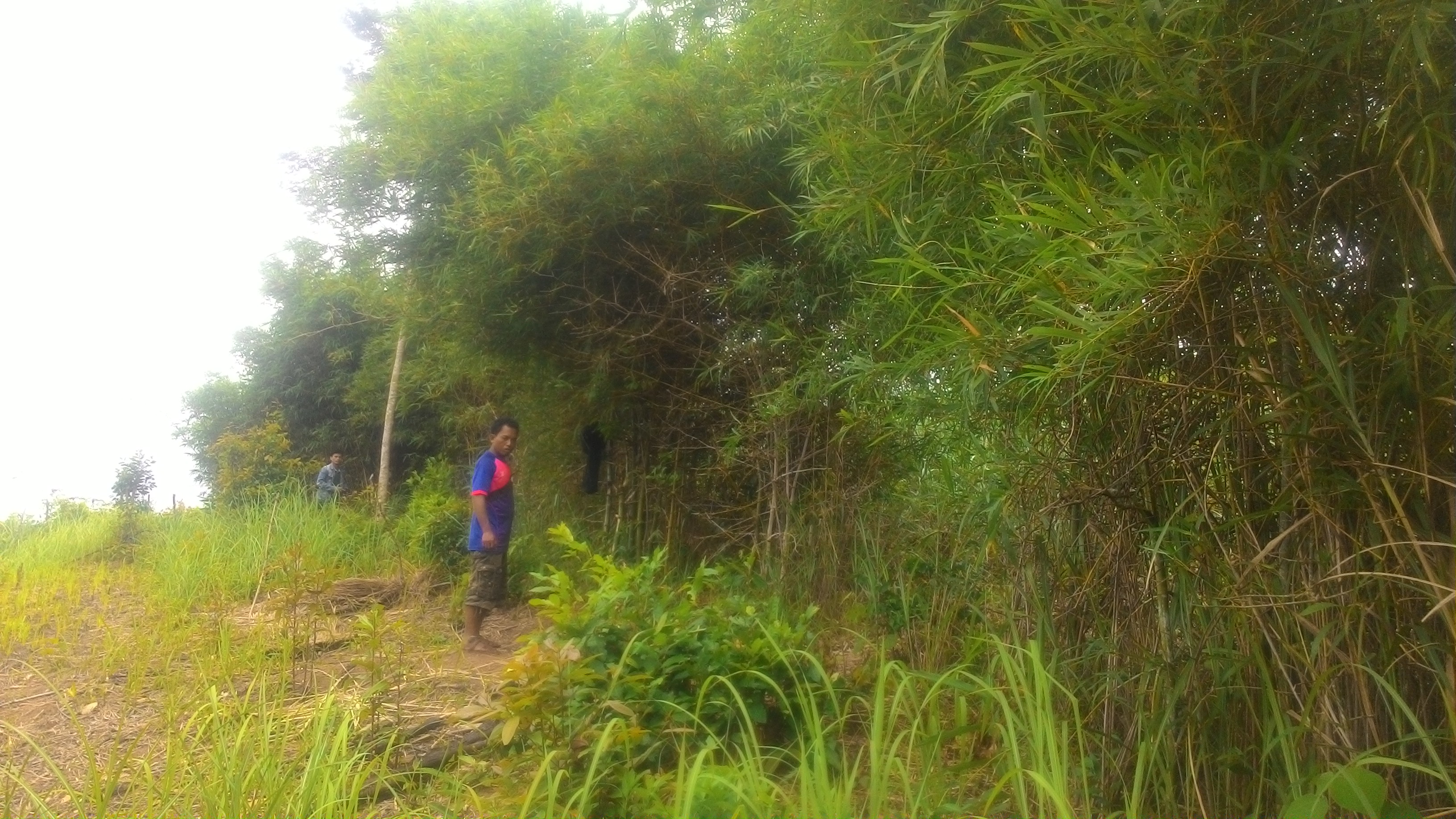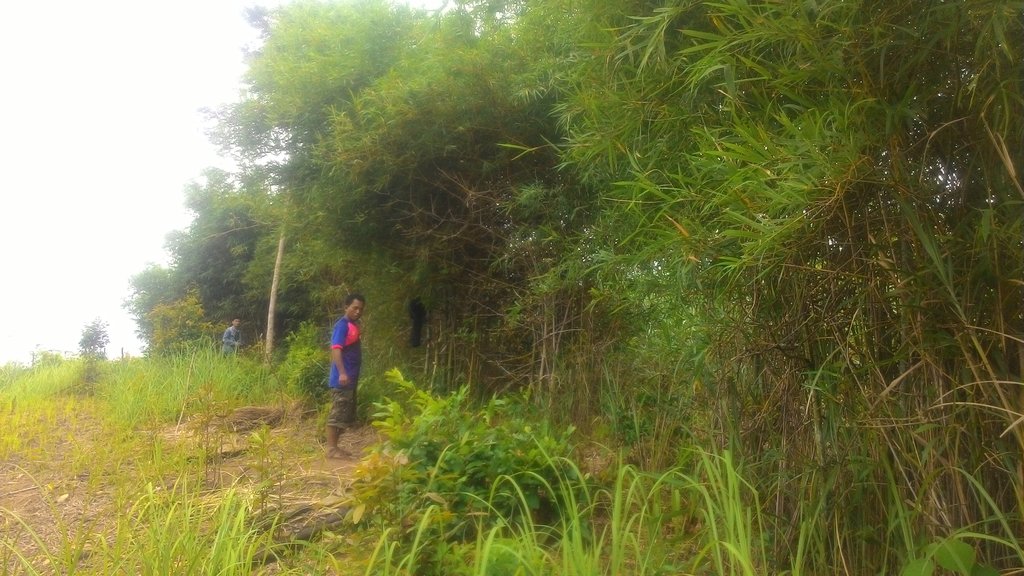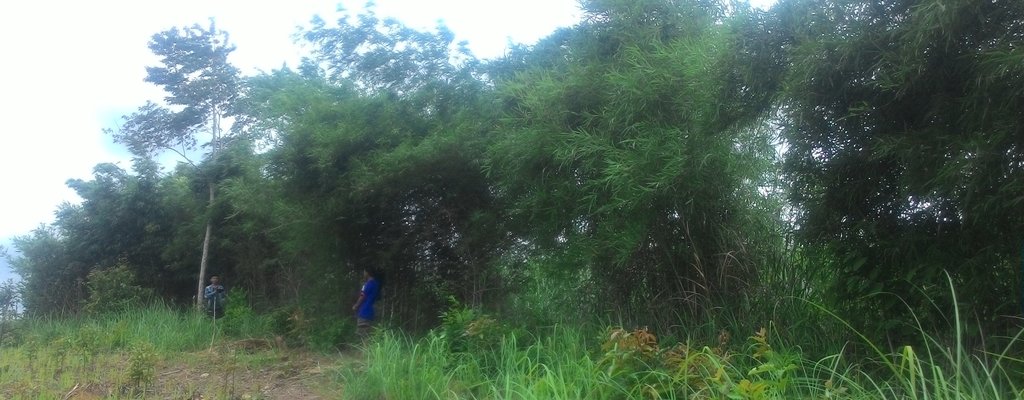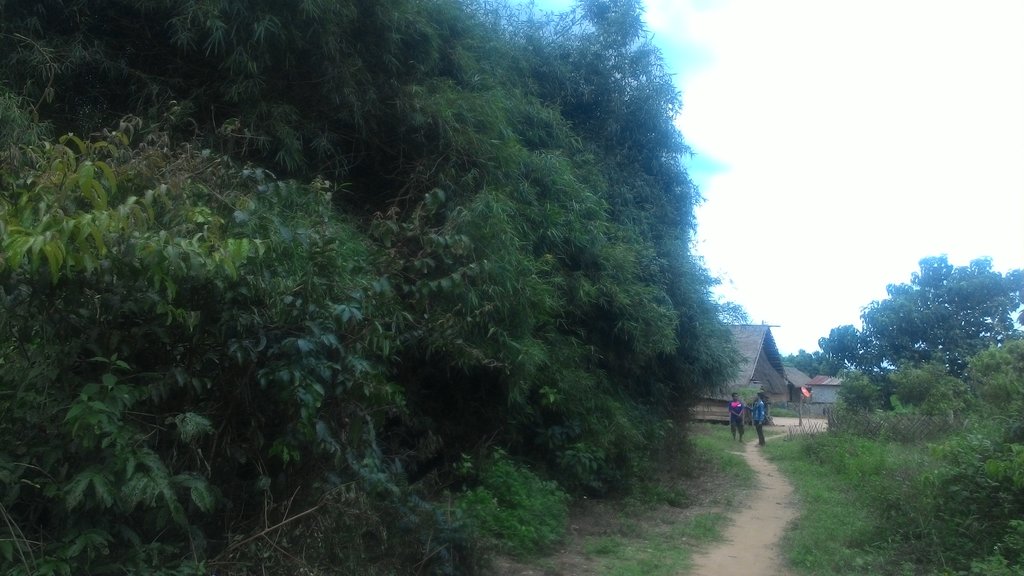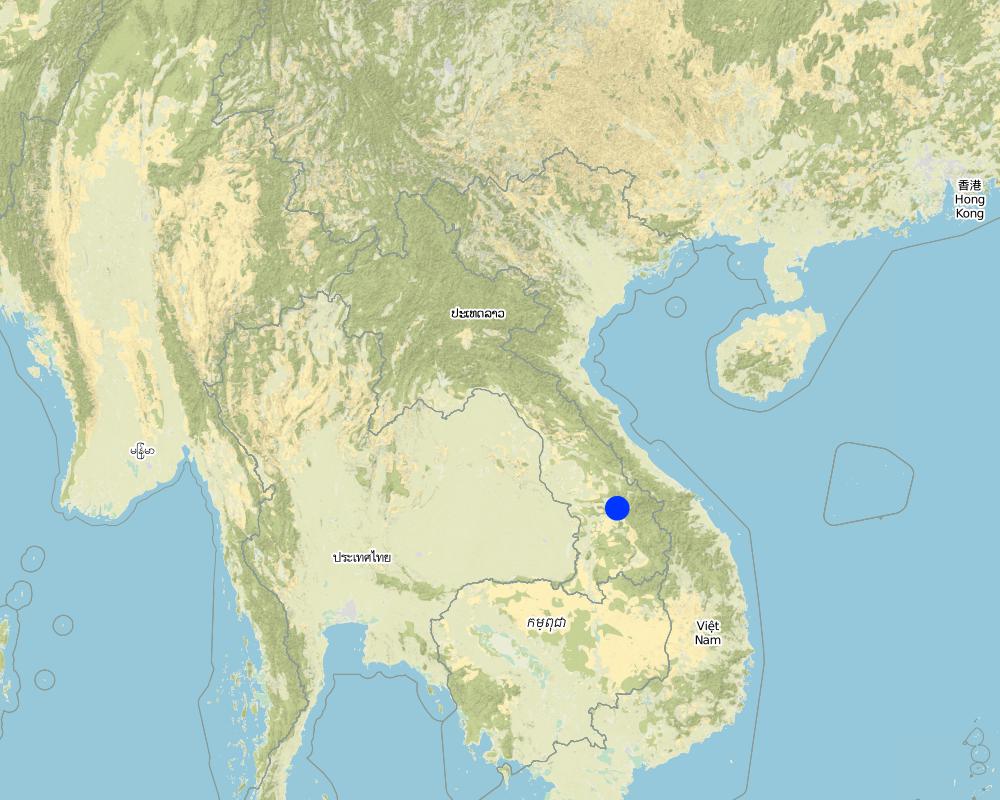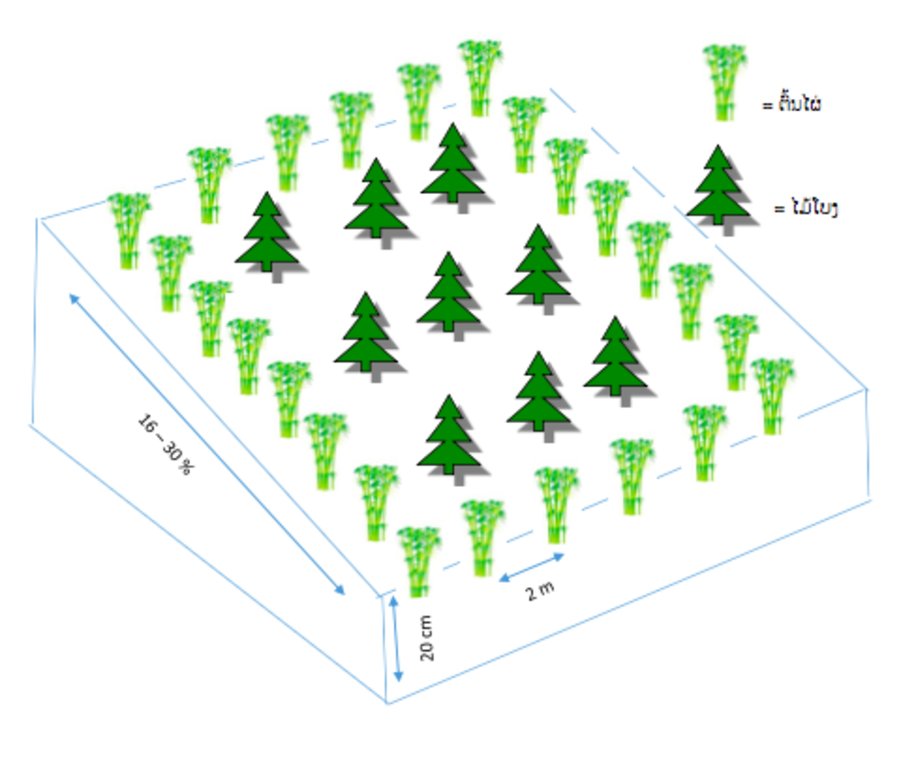ການປູກໄມ້ໄຜ່ ເພື່ອລ້ອມຮົ້ວ ແລະ ປ້ອງກັນລົມພັດແຮງ [Lao People's Democratic Republic]
- Creation:
- Update:
- Compiler: jimmy luangphithack
- Editors: sackmysay SANIDBOUNMEE, Bounthanom Bouahom, Pasalath Khounsy, anousit namsena, kang phanvongsa
- Reviewers: viengsavanh phimphachanhvongsod, Nicole Harari
technologies_2904 - Lao People's Democratic Republic
View sections
Expand all Collapse all1. معلومات عامة
1.2 Contact details of resource persons and institutions involved in the assessment and documentation of the Technology
Key resource person(s)
land user:
Lao People's Democratic Republic
land user:
ທ່ານ ອາຢຸຍ
0309845752
ບ້ານ ແມວ ເມືອງສະໝ້ວຍ
Lao People's Democratic Republic
Name of project which facilitated the documentation/ evaluation of the Technology (if relevant)
Scaling-up SLM practices by smallholder farmers (IFAD)Name of the institution(s) which facilitated the documentation/ evaluation of the Technology (if relevant)
National Agriculture and Forestry Research Institute (NAFRI) - Lao People's Democratic Republic1.3 Conditions regarding the use of data documented through WOCAT
When were the data compiled (in the field)?
04/07/2017
The compiler and key resource person(s) accept the conditions regarding the use of data documented through WOCAT:
نعم
1.4 Declaration on sustainability of the described Technology
Is the Technology described here problematic with regard to land degradation, so that it cannot be declared a sustainable land management technology?
لا
2. Description of the SLM Technology
2.1 Short description of the Technology
Definition of the Technology:
ການປູກໄມ້ໄຜ່ ເພື່ອ ລ້ອມເປັນຮົ້ວ ພື້ນທ່ີການຜະລິດ ກະສິກໍາ, ເປັນການປ້ອງກັນ ລົມພັດແຮງ ແລະ ຫຸຼດຜ່ອນ ການໄປຕັດໄມ້ ຢູປ່າ ມາເຮັດຮົ້ວ. ນອກຈາກນີ້, ໄມ້ໃຜ່ ຍັງສາມາດເປັນແຫ່ຼງລາຍຮັບ ທ່ີສໍາຄັນ ທ່ີສາມາດຂາຍເປັນສິນຄ້າ.
2.2 Detailed description of the Technology
Description:
ຕົ້ນໄມ້ໃຜ່ ຖືໄດ້ວ່າ ເປັນໄມ້ ທ່ີມີປະໂຫຍດ ຕໍ່ມະນຸດ ເພາະວ່າສາມາດ ນໍາມາເປັນອາຫານ, ນໍາໃຊ້ເຂົ້າໃນການຈັກສານ ເປັນເຄ່ືອງໃຊ້ຕ່າງໆ ແລະ ນໍາມາປຸກສ້າງ ເປັນທ່ີຢູອາໃສໄດ້. ນອກ ຈາກນັ້ນ, ຄຸນປະໂຫຍດ ຂອງການປູກໄມ້ໃຜ່ ຍັງສາມາດ ຊ່ວຍຮັກສາ ຄວາມຊຸ່ມຊ່ືນ ຂອງດິນ ເນ່ືອງຈາກໃບໃຜ່ ທີ່ລົ່ນສາມາດ ຍ່ອຍລະຫຼາຍ ກາຍເປັນຝຸ່ນໃຫ້ດິນ, ສາມາດ ສ້າງຈຸລິນຊີ ໃນດິນ ແລະ ສາມາດ ຢຶດເກາະດີນ ປ້ອງກັນດິນເຈື່ອນ ໃນເຂດຄອ້ຍຊັນ. ຈາກປະສົບການ ແລະ ບົດຮຽນ ໃນປີ 2010, ພາຍຫັຼງ ທ່ີໄດ້ຮັບຜົນກະທົບ ຈາກພາຍຸເກດສະຫນາ ເຮັດໃຫ້ພື້ນທ່ີການຜະລິດ ຂອງຊາວກະສິກອນ ໄດ້ຮັບຄວາມເສຍຫາຍ ຢ່າງໃຫຍ່ຫຼວງ ຊຶ່ງເຮັດໃຫ້ຊາວກະສິກອນ ຕ້ອງໄດ້ຊອກຫາ ວິທີທາງ ໃນການປ້ອງກັນຜົນກະທົບ ຈາກໄພພະບັດດັ່ງກ່າວນັ້ນ ໂດຍການປູກໄມ້ໃຜ່ ເປັນແຖວ ອອ້ມຮົ້ວ ເພື່ອປ້ອງກັນລົມພັດແຮງ ໃສ່ພື້ນທ່ີການຜະລິດ. ໃນເບ້ຶອງຕົ້ນ ຊາວກະສິກອນ ໄດ້ສັງເກດເຫັນວ່າ ເບ້ຍໄມ້ໃຜ່ ທ່ີເກີດຂ້ືນເອງ ຕາມທໍາມະຊາດ ຢູ່ແຄມຫ້ວຍ, ພື້ນທ່ີ ທ່ີເປັນດອນມີຢ່າງຫຼວງຫຼາຍ ແລະ ແຜ່ຂະຫຍາຍດີ ຊ່ຶງຊາວກະສິກອນ ກ່ໍສົນໃຈ ຢາກທົດລອງປູກ 2 ຟຸ່ມກ່ອນ ກ່ໍເຫັນວ່າ ຟຸ່ມໄມ້ໃຜ່ໃຫຍ່ໄວ ແລະ ຕົ້ນສູງ ທ່ີສາມາດ ຕາ້ນທານກັບລົມໄດ້ເປັນຢ່າງດີ. ດັ່ງນັ້ນ, ຊາວກະສິກອນ ຈ່ຶງໄດ້ຕັດສິນໃຈ ນໍາໄມ້ໃຜ່ມາປູກ ອອ້ມສວນຢາງໂບງ ພາຍໃນເນ້ືອທ່ີ ປະມານ 1 ເຮັກຕາ. ນອກຈາກນ້ີ, ໃນແຕ່ລະປີ ຊາວກະສິກອນ ຕອ້ງໄດ້ໄປຕັດໄມ້ ຢູ່ປ່າຈໍານວນຫຼວງຫຼາຍ ຊ່ຶງເປັນການທໍາລາຍ ຊັບພະຍາກອນປ່າໄມ້ ເພື່ອມາເຮັດຮົ້ວອອ້ມສວນ ພື້ນທ່ີທໍາການຜະລິດ ແລະ ເປັນການສ້ີນເປືອງເວລາ ໃນການໄປຕັດ, ແບກອອກມາຈາກປ່າ ແລະ ໄລຍະທາງໄກ ໃນແຕ່ລະປີ ກ່ໍຕອ້ງໄດ້ມີການບົວລະບັດຮັກສາ, ອານາໄມ, ເສຍຫຍ້າຮົ້ວ. ນອກຈາກນ້ີ, ກ່ໍຍັງມີບັນຫາ ກ່ຽວກັບ ສັດປ່າ ແລະ ສັດລຽ້ງ ເຂົ້າມາກິນຜົນ ລະ ປູກ ເຮັດໃຫ້ພື້ນທ່ີ ທໍາການຜະລິດ ໄດ້ຮັບຄວາມເສຍຫາຍ (ປະມານ 70-80% ຂອງພື້ນທີ່ ທີ່ໄດ້ຮັບຄວາມເສຍຫາຍ). ດັ່ງນັ້ນ, ກິດຈະກຳ ການເຮັດຮົ້ວ ກໍ່ມີຄວາມສຳຄັນຫຼາຍ ທີ່ຊາວກະສິກອນ ຕ້ອງໄດ້ເຮັດ ແລະ ການບຳລຸງຮັກສາ ແມ່ນເຮັດໃນປີທຳອິດ ຂອງການປູກໄມ້ໃຜ່. ຂັ້ນຕອນ ໃນການປູກ ແມ່ນຂຸດຂຸມເລິກ ປະມານ 20 ຊັງຕີແມັດ, ກວ້າງ 20 ຊັງຕີແມັດ ແລະ ໄລຍະຫ່າງແມ່ນ 2 ແມັດ, ວິທີການປູກ ແມ່ນເລືອກຕໍໃຜ່ ທ່ີມີອາຍຸ 1-2 ປີ, ຕັດໂຄນເຫງົ້າໃຫ້ຂາດ ຈາກກໍແມ່ ແລ້ວຂຸດຕັດຮາກ, ເລືອກຂະຫນາດຕົ້ນ ຫຼື ຕໍ ທ່ີບໍ່ໃຫ່ຍເກີນໄປ ເລືອກຂະຫນາດລໍາຕົ້ນເທົ່າແຂນ ຍາວປະມານ 50-80 ຊັງຕີແມັດ, ການປູກ ແມ່ນໃຫ້ນໍາຕໍໃຜ່ໄປປູກພາຍໃນວັນດຽວ ທ່ີຕັດເລີຍ ບ່ໍຄວນປະໄວ້ດົນເກີນ 2 ວັນ. ໄລ ຍະເວລາທ່ີເຫມາະສົມ ແລະ ໄດ້ຜົນດີທ່ີສຸດ ໃນການປູກໄມ້ໃຜ່ ແມ່ນກາງເດືອນພຶດສະພາ ຫາ ເດືອນມີຖຸນາ ເພາະເປັນຊ່ວງງລະດູຝົນ ສາມາດອາໃສນໍາ້ຝົນຊ່ວຍ ແລະ ເປັນໄລຍະ ທີໄມ້ໃຜ່ຈະລີນເຕີບໂຕໄວ ແລະ ຫຸຼດຜອ່ນ ອັດຕາຄວາມສ່ຽງ ບໍ່ໃຫ້ໄມ້ໃຜ່ ທີເຮົາປູກນັ້ນຕາຍ. ການບົວ ລະ ບັດຮັກສາ ຖາ້ຫາກວ່າບາງປີ ຝົນຕົກບ່ໍຫຼາຍ ເຮົາຄວນເບ່ີງແຍ່ງ ໃນຊວ່ງລະດູແລ້ງ ຫາກມີບາງຕົ້ນຫ່ຽວແຫ້ງ ກໍ່ຄວນເອົານໍາ້ໄປຫົດ 5-7 ວັນ/ຄັ້ງເພື່ອ ບໍ່ໃຫ້ໄມ້ໃຜ່ຕາຍ ຈົນກວ່າຈະຮອດລະດູຝົນ ຖ້າໄມ້ໃຜ່ບໍ່ຕາຍ ຮອດປີທີ 2 ແມ່ນບໍ່ຈໍາເປັນ ຕອ້ງຫົດນໍາ້ອີກ ພຽງແຕ່ຖ່າງຫຍາ້ ອະນາໄມ 2 ຄັ້ງ/ປີ. ຜົນດີ ຂອງເຕັກນິກ ການປູກໄມ້ໃຜ່ລອ້ມຮົ້ວ ແມ່ນໃຊຕົ້ນທຶນ ບ່ໍສູງ ແລະ ການປູກໄມ້ໃຜ່ ຍັງເປັນຜົນດີ ຕໍ່ສ່ີງແວດລອ້ມ, ເສດຖະກີດ ແລະ ສັງຄົມ. ໄມ້ໃຜ່ ສາມາດ ເພີ່ມທາດອາຫານໃນດິນ, ເພີ່ມອອກຊີເຈນ ໃນອາ ກາດ ແລະ ເຮັດໃຫ້ອຸ່ນຫະພູມ ໃນເຂດພື້ນທ່ີ ເຢັນລົງ. ສາມາດ ກິນຫນ່ໍໄດ້, ລໍາໃຜ່ ກ່ໍສາມາດໃຊ້ປະໂຫຍດ ໄດ້ຫຼາກຫຼາຍ ເປັນຕົ້ນ ແມ່ນໃຊ້ເຂົ້າໃນການຈັກສານ. ສາມາດ ຂາຍເປັນສິນຄ້າ ໃນລາຄາ 40.000 ກີບ/ກິໂລ (ສໍາລັບຫນໍ່ໄມ້ແຫ້ງ), ສາມາດຂາຍໄດ້ 40 ກິໂລ/ປີ ການເກັບກ່ຽວແມ່ນ 3 ປີ ຈ່ືງໄດ້ເກັບກ່ຽວ. ໃນປະຈຸບັນ, ມີຄອບຄົວ ຈໍານວນຫນ່ືງ ກ່ໍໄດ້ຖອດຖອນບົດ ຮຽນ ແລະ ນໍາໃຊ້ເຕັກນິກດັ້ງກ່າວ ໂດຍການເອົາໄມ້ໃຜ່ ໄປປູກອອ້ມ ຢູ່ພື້ນທ່ີນາ ແລະ ຢູ່ສວນ ເພື່ອເປັນການປ້ອງກັນສັດ ແລະ ນໍາໃຊ້ປະໂຫຍດອ່ືນໆ.
2.3 Photos of the Technology
2.5 Country/ region/ locations where the Technology has been applied and which are covered by this assessment
بلد:
Lao People's Democratic Republic
Region/ State/ Province:
ແຂວງສາລະວັນ
Further specification of location:
ເມືອງສະໝ້ວຍ
Map
×2.6 Date of implementation
Indicate year of implementation:
2009
If precise year is not known, indicate approximate date:
- less than 10 years ago (recently)
2.7 Introduction of the Technology
Specify how the Technology was introduced:
- through land users' innovation
3. Classification of the SLM Technology
3.1 Main purpose(s) of the Technology
- reduce, prevent, restore land degradation
- reduce risk of disasters
- adapt to climate change/ extremes and its impacts
- create beneficial economic impact
- create beneficial social impact
3.2 Current land use type(s) where the Technology is applied

الأراضي الزراعية
- Tree and shrub cropping
Main crops (cash and food crops):
ຕົ້ນຢາງໂບງ
3.3 Further information about land use
Water supply for the land on which the Technology is applied:
- rainfed
Number of growing seasons per year:
- 1
3.4 SLM group to which the Technology belongs
- windbreak/ shelterbelt
- integrated soil fertility management
3.5 Spread of the Technology
Specify the spread of the Technology:
- evenly spread over an area
If the Technology is evenly spread over an area, indicate approximate area covered:
- 0.1-1 km2
3.6 SLM measures comprising the Technology

vegetative measures
- V1: Tree and shrub cover
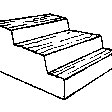
structural measures
- S6: Walls, barriers, palisades, fences
3.7 Main types of land degradation addressed by the Technology
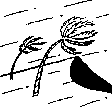
soil erosion by wind
- Eo: offsite degradation effects
3.8 Prevention, reduction, or restoration of land degradation
Specify the goal of the Technology with regard to land degradation:
- adapt to land degradation
4. Technical specifications, implementation activities, inputs, and costs
4.1 Technical drawing of the Technology
4.2 Technical specifications/ explanations of technical drawing
ຊາວກະສິກອນ ປູກໄມ້ໃຜ່ ອອ້ມເປັນຮົ້ວ ໃສ່ພື້ນທີ່ ປູກຢາງໂບງ ທັງຫມົດ 4 ແຈ, ຄັດເລືອກ ເອົາຕົ້ນພໍ່ພັນແມ່ພັນ ທ່ີແຂງແຮງ ຄວາມສູງຂອງເບ້ຍ ປະມານ 40- 60 ຊັງຕີແມັດ (ປະມານ 8 ເປົາ) ພາຍຫັຼງ ໄດ້ເບ້ຍໄມ້ໃຜ່ ເປັນທ່ີຮຽບຮ້ອຍແລວ້ ກ່ໍສາມາດນໍາໄປປູກເລີຍ (ບໍ່ໃຫ້ກາຍ 7 ວນັ ພາຍຫັຼງຂຸດ ມາຈາກປ່າ), ໄລຍະຫ່າງ ຂອງກໍໃຜ່ 2x 2 ແມັດ, ຂຸດຂຸມປູກ ເລິກ ປະມານ 40 X 40 ຊັງຕີແມັດ, ປູກໃນຊ່ວງ ທ່ີມີຝົນຕົກ ເພື່ອບ່ໍໃຫ້ມີຄວາມສຽ່ງ ຕ່ໍການຕາຍ ຂອງແນວພັນ ພາຍຫລັງປູກແລ້ວ ແມ່ນມີການບົວລະບັດ ເປັນໄລຍະ ໂດຍການເສຍຫຍາ້ 2 ເທ່ືອ/ປີ.
4.3 General information regarding the calculation of inputs and costs
Specify how costs and inputs were calculated:
- per Technology area
Indicate size and area unit:
1 ເຮັກຕາ
other/ national currency (specify):
ກີບ
Indicate exchange rate from USD to local currency (if relevant): 1 USD =:
8000,0
Indicate average wage cost of hired labour per day:
30000 ກີບ
4.4 Establishment activities
| Activity | Type of measure | Timing | |
|---|---|---|---|
| 1. | ການກະກຽມດິນ | Management | ລະດູແລ້ງ ເດືອນທີມັງກອນ ຫາ ເດືອນກຸມພາ |
| 2. | ຖາງ ແລະ ຈຸດອານາໄມພື້ນທີ່ | Management | ເດືອນມີນາ |
| 3. | ຂຸດເບ້ຍໄມ້ໃຜ່ ຢູ່ປ່າ | Management | 1 ອາທິດ ພາຍຫຼັງ ສຳເລັດການກະກຽມດິນ |
| 4. | ການປູກໄມ້ໃຜ້ | Agronomic | ລະດູຝົນ ເດືອນກໍລະກົດ ຫາ ເດືອນສິງຫາ |
| 5. | ການເສຍຫຍ້າ | Management | ພາຍຫຼັງປູກ (3 ຄັ້ງ/ປີ) |
4.5 Costs and inputs needed for establishment
| Specify input | Unit | Quantity | Costs per Unit | Total costs per input | % of costs borne by land users | |
|---|---|---|---|---|---|---|
| Equipment | ພ້າ | ດວງ | 4,0 | 30000,0 | 120000,0 | 100,0 |
| Equipment | ຂວານ | ດວງ | 1,0 | 100000,0 | 100000,0 | 100,0 |
| Total costs for establishment of the Technology | 220000,0 | |||||
4.6 Maintenance/ recurrent activities
| Activity | Type of measure | Timing/ frequency | |
|---|---|---|---|
| 1. | ການເສ້ຍຫຍ້າ ລຽບຕາມຮົ້ວ | Management | ໃນຊ່ວງປູກປີທຳອີດ (3 ຄັ້ງ/ປີ) |
4.7 Costs and inputs needed for maintenance/ recurrent activities (per year)
| Specify input | Unit | Quantity | Costs per Unit | Total costs per input | % of costs borne by land users | |
|---|---|---|---|---|---|---|
| Labour | ແຮງງານ ເສຍຫຍ້າ | ວັນງານ | 6,0 | 30000,0 | 180000,0 | 100,0 |
| Total costs for maintenance of the Technology | 180000,0 | |||||
4.8 Most important factors affecting the costs
Describe the most determinate factors affecting the costs:
ການໄປຊອກຂຸດເບ້ຍ ຫືຼ ເຫງົ້າໄມ້ໃຜ່ ຢູ່ປ່າ ເພື່ອນຳມາປູກໃສ່ສວນ ແມ່ນເປັນປັດໃຈ ທີ່ສົງຜົນ ຕໍ່ການຈັດຕັ້ງປະຕິບັດ ເຕັກນີກນີ້ ເນື່ອງຈາກຕ້ອງໄດ້ໃຊ້ແຮງງານຫຼາຍ.
5. Natural and human environment
5.1 Climate
Annual rainfall
- < 250 mm
- 251-500 mm
- 501-750 mm
- 751-1,000 mm
- 1,001-1,500 mm
- 1,501-2,000 mm
- 2,001-3,000 mm
- 3,001-4,000 mm
- > 4,000 mm
Indicate the name of the reference meteorological station considered:
ຫ້ອງການ ອຸຕຸນິຍົມ ເມືອງສະໝ້ວຍ
Agro-climatic zone
- humid
5.2 Topography
Slopes on average:
- flat (0-2%)
- gentle (3-5%)
- moderate (6-10%)
- rolling (11-15%)
- hilly (16-30%)
- steep (31-60%)
- very steep (>60%)
Landforms:
- plateau/plains
- ridges
- mountain slopes
- hill slopes
- footslopes
- valley floors
Altitudinal zone:
- 0-100 m a.s.l.
- 101-500 m a.s.l.
- 501-1,000 m a.s.l.
- 1,001-1,500 m a.s.l.
- 1,501-2,000 m a.s.l.
- 2,001-2,500 m a.s.l.
- 2,501-3,000 m a.s.l.
- 3,001-4,000 m a.s.l.
- > 4,000 m a.s.l.
Indicate if the Technology is specifically applied in:
- not relevant
5.3 Soils
Soil depth on average:
- very shallow (0-20 cm)
- shallow (21-50 cm)
- moderately deep (51-80 cm)
- deep (81-120 cm)
- very deep (> 120 cm)
Soil texture (topsoil):
- medium (loamy, silty)
Soil texture (> 20 cm below surface):
- medium (loamy, silty)
Topsoil organic matter:
- medium (1-3%)
5.4 Water availability and quality
Ground water table:
5-50 m
Availability of surface water:
poor/ none
Water quality (untreated):
good drinking water
Is water salinity a problem?
لا
Is flooding of the area occurring?
لا
5.5 Biodiversity
Species diversity:
- medium
Habitat diversity:
- medium
5.6 Characteristics of land users applying the Technology
Sedentary or nomadic:
- Sedentary
Market orientation of production system:
- mixed (subsistence/ commercial
Off-farm income:
- 10-50% of all income
Relative level of wealth:
- average
Individuals or groups:
- individual/ household
Level of mechanization:
- manual work
Gender:
- women
- men
Age of land users:
- middle-aged
5.7 Average area of land owned or leased by land users applying the Technology
- < 0.5 ha
- 0.5-1 ha
- 1-2 ha
- 2-5 ha
- 5-15 ha
- 15-50 ha
- 50-100 ha
- 100-500 ha
- 500-1,000 ha
- 1,000-10,000 ha
- > 10,000 ha
Is this considered small-, medium- or large-scale (referring to local context)?
- small-scale
5.8 Land ownership, land use rights, and water use rights
Land ownership:
- individual, titled
Land use rights:
- individual
Water use rights:
- open access (unorganized)
5.9 Access to services and infrastructure
health:
- poor
- moderate
- good
education:
- poor
- moderate
- good
technical assistance:
- poor
- moderate
- good
employment (e.g. off-farm):
- poor
- moderate
- good
markets:
- poor
- moderate
- good
energy:
- poor
- moderate
- good
roads and transport:
- poor
- moderate
- good
drinking water and sanitation:
- poor
- moderate
- good
financial services:
- poor
- moderate
- good
6. Impacts and concluding statements
6.1 On-site impacts the Technology has shown
Socio-economic impacts
Income and costs
farm income
Comments/ specify:
ຊາວກະສິກອນ ສາມາດ ຂາຍຫນໍ່ໄມ້ໄດ້ 1,600,000 ກີບ/ປີ
diversity of income sources
Comments/ specify:
ເພີ່ມລາຍຮັບ ຈາກການຂາຍໜໍ່ໄມ້ ແລະ ຢາງໂບງ
workload
Comments/ specify:
ສາມາດ ຫຸຼດຜ່ອນ ແຮງງານ ໃນການເຂົ້າໄປຕັດໄມ້ ມາເຮັດຫັຼກຮົ້ວ
Ecological impacts
Soil
soil moisture
Comments/ specify:
ເພີ່ມຄວາມອຸດົມ ສົມບູນ ຂອງດິນ
Climate and disaster risk reduction
impacts of cyclones, rain storms
Comments/ specify:
ຕົນໄມ້ໃຜ່ທີ່ໃຫຍ່ ແລະ ສູງຂື້ນ ສາມາດປ້ອງກັນ ແລະ ຕາ້ນທານ
ກັບລົມພັດແຮງ
wind velocity
Comments/ specify:
ຫຸຼດຜອ່ນ ຄວາມແຮງ ຂອງລົມພັດທ່ີພັດເຂົ້າໃສ່ສວນຢາງໂບງ
6.2 Off-site impacts the Technology has shown
ການຕັດໄມ້ທຳລາຍປ່າ
Comments/ specify:
ຫຸຼດຜອ່ນ ບັນຫາ ການຕັດໄມ້ທໍາລາຍປ່າ ເພຶ່ອມາເຮັດຮົ້ວ
6.4 Cost-benefit analysis
How do the benefits compare with the establishment costs (from land users’ perspective)?
Short-term returns:
slightly positive
Long-term returns:
very positive
How do the benefits compare with the maintenance/ recurrent costs (from land users' perspective)?
Short-term returns:
positive
Long-term returns:
positive
6.5 Adoption of the Technology
- 1-10%
If available, quantify (no. of households and/ or area covered):
2 ຄອບຄົວ
Of all those who have adopted the Technology, how many have did so spontaneously, i.e. without receiving any material incentives/ payments?
- 10-50%
6.6 التكيف
Has the Technology been modified recently to adapt to changing conditions?
نعم
other (specify):
ເປັນວິທີການໜຶ່ງ ໃນການປູກໄມ້ໃຜ່
6.7 Strengths/ advantages/ opportunities of the Technology
| Strengths/ advantages/ opportunities in the land user’s view |
|---|
| ເປັນອີກວິທີການໜຶ່ງ ຂອງການປູກໄມ້ໃຜ່ ເຮັດເປັນຮົ້ວ ພ້ອມດຽວກັນນັ້ນ ກໍ່ທັງປ້ອງກັນ ແຮງລົມ ທີ່ພັດເຂົ້າໃສ່ ສວນຢາງໂບງ. |
| ສາມາດ ປ້ອງກັນສັດລຽ້ງ ແລະ ສັດປ່າ ບຸກລຸກເຂົ້ົາພື້ນທ່ີ ທໍາການຜະລິດໄດ້ ເນ່ືອງຈາກວ່າ ຕົ້ນຂອງໄມ້ໃຜ່ ມີຫຼາຍຕົ້ນ ທ່ີແຕກແຫນງອອກມາ ເຮັດໃຫ້ສັດ ບ່ໍສາມາດ ເຂົ້າພື້ນທ່ີ ທໍາການຜະລິດໄດ້. |
| ສາມາດ ນໍາໃຊ້ເປັນເຄ່ືອງຈັກສານ (ກະຜ່າ, ສານກະແຕະ). ໜໍ່ໄມ້ ຍັງສາມາດກິນເປັນອາຫານ ແລະ ຂາຍເປັນສິນຄ້າໄດ້. |
| Strengths/ advantages/ opportunities in the compiler’s or other key resource person’s view |
|---|
| ຮາກຂອງໄມ້ໃຜ່ ສາມາດຢັ່ງລົງເລິກ ແລະ ຍືດເກາະ ກັບພື້ນດິນ ໄດ້ເປັນຢ່າງດີ ສາມາດປ້ອງກັນດິນເຈ່ືອນໄດ້ ແລະ ຕົ້ນໄມ້ໃຜ່ຍັງສາມາດ ບັງລົມໄດ້ເປັນຢ່າງດີ. |
| ສາມາດ ປະຢັດເວລາ ແລະ ແຮງງານ ໃນການເຂົາໄປປ່າ ເພື່ອໄປຊອກຫາຫນໍ່ໄມ້ ມາກິນ ແລະ ຂາຍ. |
| ຫຼຸດຜ່ອນ ການບຸກລຸກ ເຂົ້າປ່າໄປຕັດຕົ້ນໄມ້ ເພື່ອມາເຮັດຮົ້ວ. |
6.8 Weaknesses/ disadvantages/ risks of the Technology and ways of overcoming them
| Weaknesses/ disadvantages/ risks in the land user’s view | How can they be overcome? |
|---|---|
| ພືດທ່ີ ປູກໄກ້ຄຽງ ກັບຕົ້ນໄມ້ໃຜ່ ຈະບໍ່ໄດ້ຮັບຜົນຜະລິດເທົ່າທ່ີຄວນ ເນ່ືອງຈາກຕົ້ນໄມ້ໃຜ່ ປົກຄຸມພື້ນທ່ີ ເຮັດໃຫ້ພື້ນທີ່ບໍລິເວນດັ່ງກ່າວນັ້ນ ເຕີບໂຕ ບໍ່ໄດ້ດີເທົ່າທ່ີຄວນ | ຕັດອະນາໄມ ພື້ນທີ່ ທີ່ຖືກປົກຄຸມເປັນປະຈຳ |
| ມີປະຊາຊົນ ຈໍານວນຫນ່ຶງ ລັກຕັດຫນໍ່ໄມ້ |
7. References and links
7.1 Methods/ sources of information
- field visits, field surveys
1
- interviews with land users
1
Links and modules
Expand all Collapse allLinks
No links
Modules
No modules


